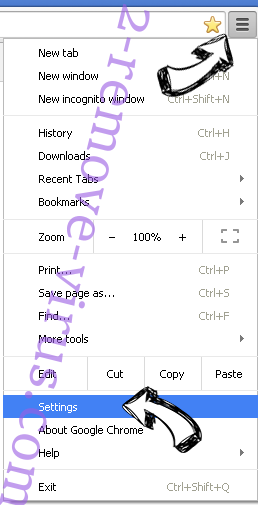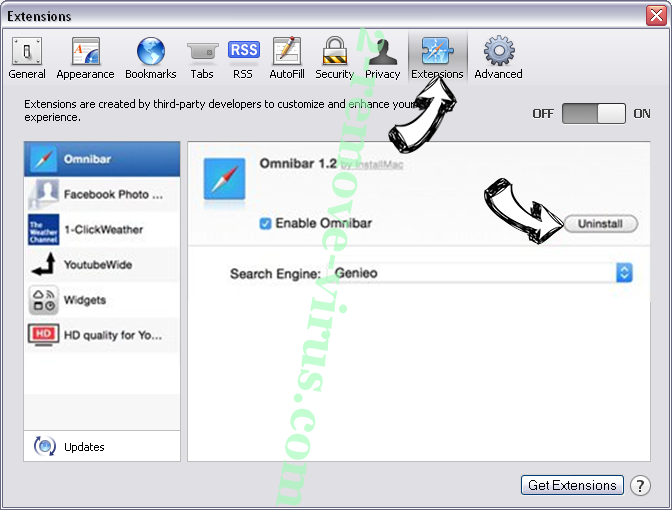About PC Speed Up
PC Speed Up is a potentially unwanted program (PUP), advertised as a system optimization tool. It’s one of those programs that gets installed without permission, alarms users into thinking that their computers have hundreds of issues and then offers to fix those issues if users purchase the full program. There are countless programs like this (Power PC Care 2018, PC Repair 2018, Simpiclean), and they’re all essentially the same. The interface may differ slightly but they all have the same purpose, and that is to trick users into purchasing software they don’t really need. Even legitimate system optimizers are often questioned because many users believe they are completely unnecessary. However, users are often temped with promises of improved computer performance and a cleaner system. 
If PC Speed Up has installed on your system and is now claiming that it’s full of issues, we would not recommend trusting it. Do not purchase it as it is likely showing you fake or exaggerated results just to have you pay for the full program, which is necessary to use the “fix” feature. Instead of purchasing it, you should uninstall PC Speed Up.
These kinds of programs often use the bundling method install, which basically is attaching unwanted programs to freeware as extra offers. Users usually end up installing those offers simply because they do not pay enough attention to how they install freeware to notice them. The following section will explain how you can avoid these unwanted programs and still install freeware.
How do PUPs install?
Potentially unwanted programs are generally attached to freeware as extra offers. They are hidden during installation, and are allowed to install alongside the programs they are attached to. This is why it’s a favored method among unwanted program developers. If you want to prevent these unwanted installations, you need to pay attention to how you install freeware. Most importantly, you need to choose Advanced (Custom) settings. Those settings will make all added offers visible, and you will be able to deselect all of them. In very rare occasions will the offers be useful to you, so we suggest you always deselect the offers when installing freeware. Otherwise, your computer will quickly fill up with junk programs that are troublesome to get rid of.
You could have also installed PC Speed Up yourself, though it’s doubtful as there are simply too many programs like it for you to stumble upon this particular one accidentally. If you did install it, you need to be more careful in the future. Look into a program properly before you install it.
Should you delete PC Speed Up?
The program will scan your computer as soon as it installs. It supposedly looks for issues that may be affecting your computer’s performance. Do not be surprised if you are shown a list of hundreds of problems on your computer. There is no need to be alarmed because these kinds of programs often exaggerate the number of problems and their severeness in order to alarm users. Some of those issues might be really minor, and some might not exist at all. If you choose to repair the issues using the program, you will be asked to purchase it first. These kinds of programs usually cost around $30, and we do not recommend spending that money on this program. It’s unlikely to speed up your PC or do anything at all really.
Some optimizers may even harm your device by deleting essential files. There are many users that had to reinstall their Windows because a system optimization tool deleted necessary files. Even Microsoft advises against using such tools because it could cause problems, resulting in the need to reinstall the system. Therefore, be very careful when operating such tools, particularly ones that have a questionable reputation.
While many believe that system optimization programs are unnecessary, you may believe otherwise. If you think your computer could benefit from using such a program, you should look into free options.
PC Speed Up removal
Some anti-malware software will detect the program as a potential threat, so you may go with automatic PC Speed Up removal. However, it might just be easier to remove PC Speed Up manually. If you are unsure about how to do it, use the below provided instructions to help you. If you have purchased its license, you need to cancel the subscription and make sure that no more money will be taken.
Offers
Download Removal Toolto scan for PC Speed UpUse our recommended removal tool to scan for PC Speed Up. Trial version of provides detection of computer threats like PC Speed Up and assists in its removal for FREE. You can delete detected registry entries, files and processes yourself or purchase a full version.
More information about SpyWarrior and Uninstall Instructions. Please review SpyWarrior EULA and Privacy Policy. SpyWarrior scanner is free. If it detects a malware, purchase its full version to remove it.

WiperSoft Review Details WiperSoft (www.wipersoft.com) is a security tool that provides real-time security from potential threats. Nowadays, many users tend to download free software from the Intern ...
Download|more


Is MacKeeper a virus? MacKeeper is not a virus, nor is it a scam. While there are various opinions about the program on the Internet, a lot of the people who so notoriously hate the program have neve ...
Download|more


While the creators of MalwareBytes anti-malware have not been in this business for long time, they make up for it with their enthusiastic approach. Statistic from such websites like CNET shows that th ...
Download|more
Quick Menu
Step 1. Uninstall PC Speed Up and related programs.
Remove PC Speed Up from Windows 8
Right-click in the lower left corner of the screen. Once Quick Access Menu shows up, select Control Panel choose Programs and Features and select to Uninstall a software.


Uninstall PC Speed Up from Windows 7
Click Start → Control Panel → Programs and Features → Uninstall a program.


Delete PC Speed Up from Windows XP
Click Start → Settings → Control Panel. Locate and click → Add or Remove Programs.


Remove PC Speed Up from Mac OS X
Click Go button at the top left of the screen and select Applications. Select applications folder and look for PC Speed Up or any other suspicious software. Now right click on every of such entries and select Move to Trash, then right click the Trash icon and select Empty Trash.


Step 2. Delete PC Speed Up from your browsers
Terminate the unwanted extensions from Internet Explorer
- Tap the Gear icon and go to Manage Add-ons.


- Pick Toolbars and Extensions and eliminate all suspicious entries (other than Microsoft, Yahoo, Google, Oracle or Adobe)


- Leave the window.
Change Internet Explorer homepage if it was changed by virus:
- Tap the gear icon (menu) on the top right corner of your browser and click Internet Options.


- In General Tab remove malicious URL and enter preferable domain name. Press Apply to save changes.


Reset your browser
- Click the Gear icon and move to Internet Options.


- Open the Advanced tab and press Reset.


- Choose Delete personal settings and pick Reset one more time.


- Tap Close and leave your browser.


- If you were unable to reset your browsers, employ a reputable anti-malware and scan your entire computer with it.
Erase PC Speed Up from Google Chrome
- Access menu (top right corner of the window) and pick Settings.


- Choose Extensions.


- Eliminate the suspicious extensions from the list by clicking the Trash bin next to them.


- If you are unsure which extensions to remove, you can disable them temporarily.


Reset Google Chrome homepage and default search engine if it was hijacker by virus
- Press on menu icon and click Settings.


- Look for the “Open a specific page” or “Set Pages” under “On start up” option and click on Set pages.


- In another window remove malicious search sites and enter the one that you want to use as your homepage.


- Under the Search section choose Manage Search engines. When in Search Engines..., remove malicious search websites. You should leave only Google or your preferred search name.




Reset your browser
- If the browser still does not work the way you prefer, you can reset its settings.
- Open menu and navigate to Settings.


- Press Reset button at the end of the page.


- Tap Reset button one more time in the confirmation box.


- If you cannot reset the settings, purchase a legitimate anti-malware and scan your PC.
Remove PC Speed Up from Mozilla Firefox
- In the top right corner of the screen, press menu and choose Add-ons (or tap Ctrl+Shift+A simultaneously).


- Move to Extensions and Add-ons list and uninstall all suspicious and unknown entries.


Change Mozilla Firefox homepage if it was changed by virus:
- Tap on the menu (top right corner), choose Options.


- On General tab delete malicious URL and enter preferable website or click Restore to default.


- Press OK to save these changes.
Reset your browser
- Open the menu and tap Help button.


- Select Troubleshooting Information.


- Press Refresh Firefox.


- In the confirmation box, click Refresh Firefox once more.


- If you are unable to reset Mozilla Firefox, scan your entire computer with a trustworthy anti-malware.
Uninstall PC Speed Up from Safari (Mac OS X)
- Access the menu.
- Pick Preferences.


- Go to the Extensions Tab.


- Tap the Uninstall button next to the undesirable PC Speed Up and get rid of all the other unknown entries as well. If you are unsure whether the extension is reliable or not, simply uncheck the Enable box in order to disable it temporarily.
- Restart Safari.
Reset your browser
- Tap the menu icon and choose Reset Safari.


- Pick the options which you want to reset (often all of them are preselected) and press Reset.


- If you cannot reset the browser, scan your whole PC with an authentic malware removal software.
Site Disclaimer
2-remove-virus.com is not sponsored, owned, affiliated, or linked to malware developers or distributors that are referenced in this article. The article does not promote or endorse any type of malware. We aim at providing useful information that will help computer users to detect and eliminate the unwanted malicious programs from their computers. This can be done manually by following the instructions presented in the article or automatically by implementing the suggested anti-malware tools.
The article is only meant to be used for educational purposes. If you follow the instructions given in the article, you agree to be contracted by the disclaimer. We do not guarantee that the artcile will present you with a solution that removes the malign threats completely. Malware changes constantly, which is why, in some cases, it may be difficult to clean the computer fully by using only the manual removal instructions.
